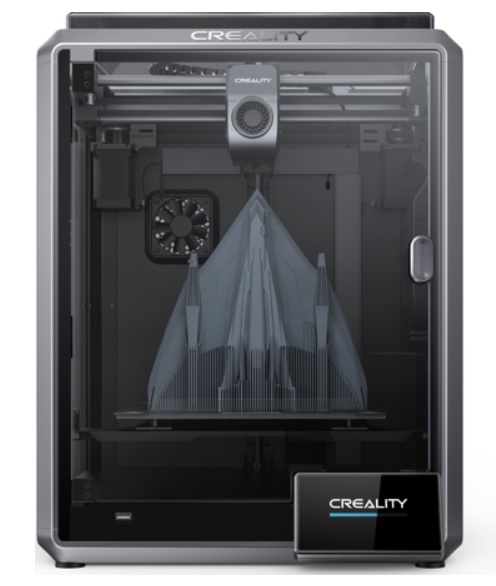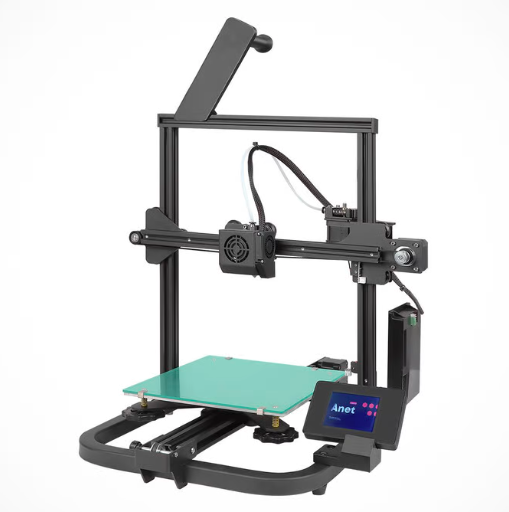Compare K1 vs A8 V2
Comparison between the best 3D printers
Choose the best 3D printer at the best price. The cheapest 3D printers are here.
Buy a 3D printer here with 3D Fila.
 |
 |
|
| Model | K1[BUY K1] |
A8 V2 |
| Printing Material | Filament | Filament |
| Buy Filament for Creality 3D K1 | Buy Filament forAnet A8 V2 | |
| Estimated price | $399,00 | $129,00 |
| Manufacturer | Creality 3D | Anet |
| Release Year | 2023 | 2021 |
| Print Volume [mm] | 220x220x250 | 220x220x250 |
| Printer Size [mm] | 355x355x480 | 428x441x486 |
| Weight [kg] | 12,5 | 6,2 |
| Power Loss Recovery | YES | NO |
| Enclosed printer | YES | NO |
| Bed Leveling | Automatic | Manual |
| Filament End Sensor | YES | NO |
| Bed type | Heated | |
| Power supply system | Direct Drive | Bowden |
| Standard nozzle | 0,4 | 0,4 |
| Maximum Nozzle Temperature [°C] | 300 | 230 |
| Maximum Bed Temperature [°C] | 120 | |
| Maximum printing speed [mm/s] | 600 | 150 |
| Filament holder | YES | YES |
| Camera for supervision | YES | YES |
| Recommended filaments | ABS, PLA, PETG, PET, TPU, PA, ABS, ASA, PC, PLA-CF, PA-CF, PET-CF | PLA |
| Recommended slicers | Creality Print; Cura, Simplify3D e PrusaSlicer | Cura, Simplify, Slic3r, IdeaMaker |
| Maximum Resolution [mm] | 0,1 | 0,1 |
| Processor | ||
| Display | Display touchscreen 4,3'' | Display touchscreen 2,8'' |
| Power Supply | 110/220V / 350W | 110/220V / 250W |
| Connectivity | Ethernet / USB / Wi-Fi | SD / USB |
| Operating systems | Windows, Mac, Linux | Windows, Mac, Linux |
| Date of registration in the system | 2023-04-17 | 2022-11-10 |
| Release date | 2023 | 2021 |
| Extra features | The K1 is an extremely fast FDM 3D printer, reaching 600mm/s, 12 times faster than standard models. Equipped with a Core XY system and lightweight print head, it offers energy efficiency and high print quality. It stands out for its dual-gear extruder and quickly heated hotend, as well as dual cooling to prevent warping. Its robust structure ensures stability at high speed, with optimized software to speed up the printing process. | The Anet A8 V2 is a Cartesian-XZ type 3D printer with a build volume of 220 x 220 x 250 mm, Ender 3 design and V-slot assembly. It has a 32-bit motherboard and touchscreen interface, promising ease of use. It uses open source firmware and has thermal failure protection. It stands out for its cable organization and the absence of a heated bed, focusing on energy savings and PLA printing. It comes with an external power adapter, aiming at greater safety, especially for beginners and educational use. |
| Support for multiple colors and materials (AMS and CFS) | NO | NO |
Notes * |
||
| Cost-benefit | 7 / 10 | 6 / 10 |
| Hardware | 4.2 / 10 | 0.5 / 10 |
| Tela | . | . |
| Print volume | 3 / 10 | 3 / 10 |
| Performance | 5 / 10 | 1 / 10 |
| [BUY K1] |
Conclusion |
| In conclusion, the comparison between the Creality 3D K1 and the Anet A8 V2 highlights significant differences that cater to distinct user needs and budgets. The K1, with its advanced features such as high-speed printing capabilities, automatic bed leveling, and power loss recovery, is clearly positioned as a more professional and versatile option. Its robust build quality and support for various filament types make it suitable for a wide range of applications, aligning well with users who prioritize performance and reliability in their 3D printing endeavors. On the other hand, the Anet A8 V2 is an affordable entry-level model that serves well for beginners or educational purposes. Its simpler design, manual bed leveling, and focus on energy efficiency make it a good choice for those looking to explore 3D printing without a significant financial commitment. However, its limited printing capabilities and lack of advanced features might restrict its usability for more complex projects. Ultimately, while the K1 offers superior technology and performance at a higher price point, the A8 V2 remains an attractive option for budget-conscious consumers or those new to 3D printing. The decision between the two depends significantly on the user's intended use, experience level, and budget considerations. |

